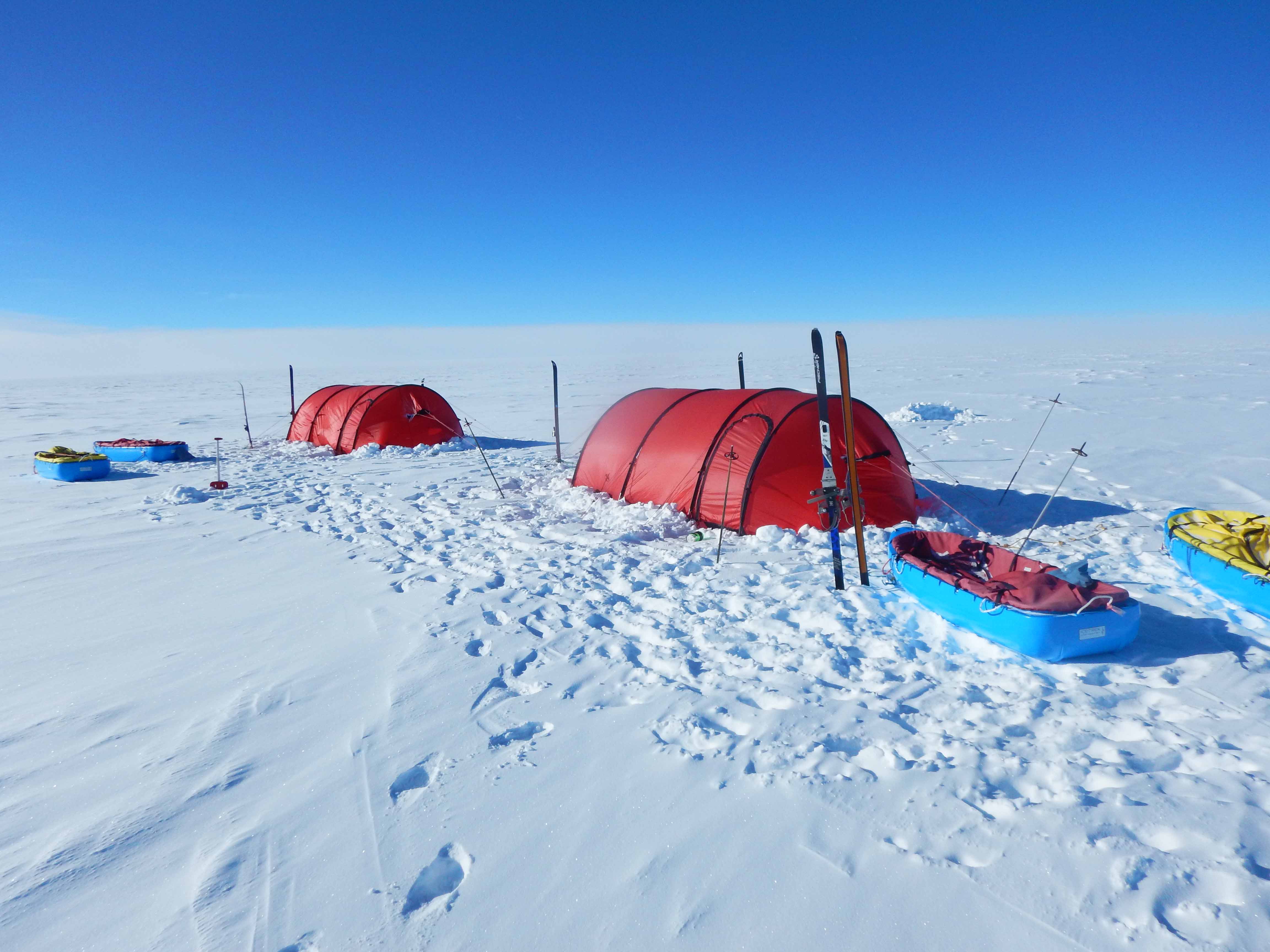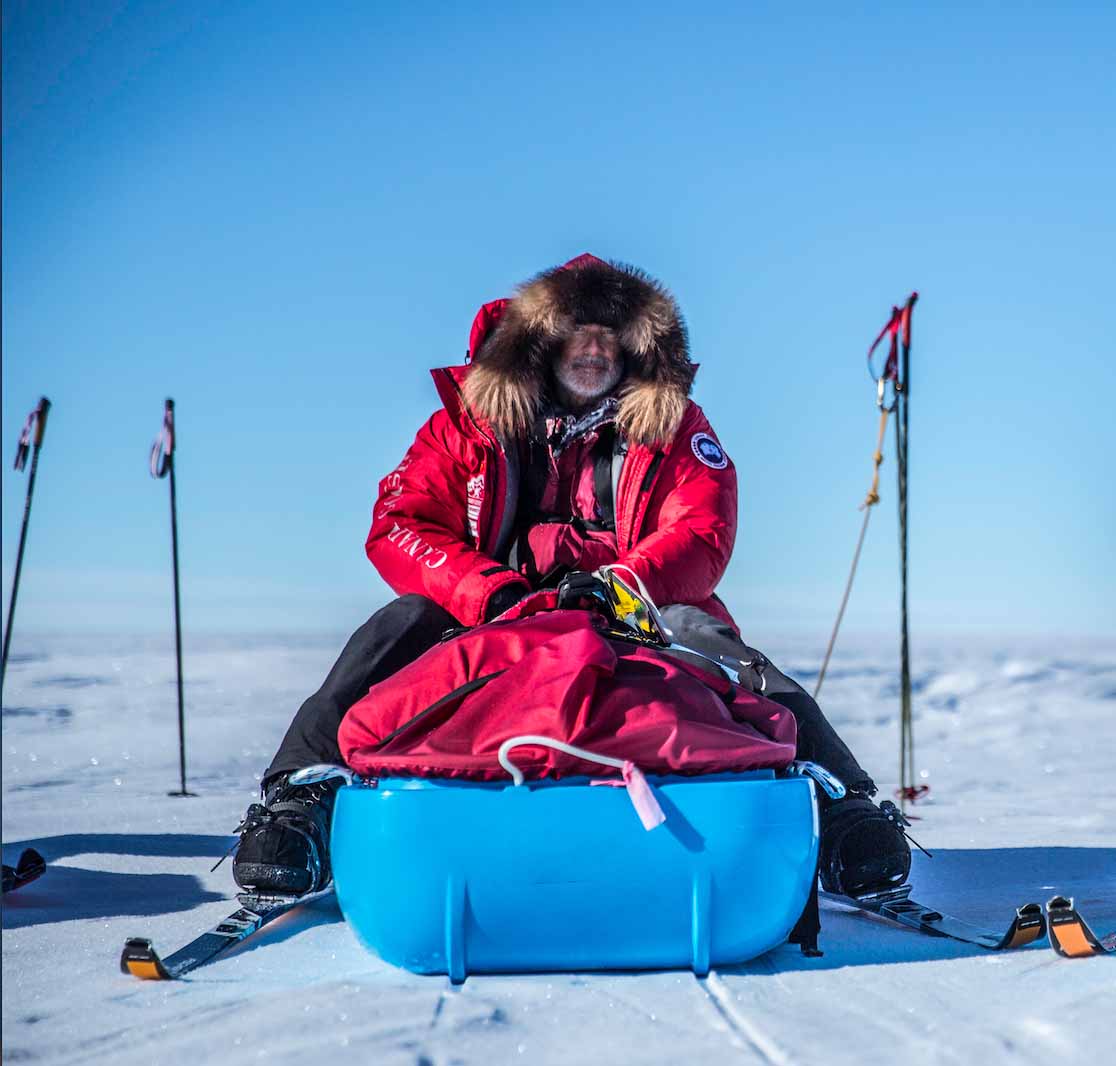The South Pole lies at the extreme bottom of our planet. Until 1911 no human, or anything else that we are aware of, had ever stood at the South Pole. Before this time Antarctica was known as Terra Australis Incognita (unknown southern land). The word Antarctica refers to the opposite of the Arctic Circle at the northern most part of our planet.
In 1773 James Cook was the first to sail into the Antarctic Circle though he did not catch sight of Antarctica itself. It was not until 1819-1820 that Antarctica was spotted and landed upon by a few different explorers from Russia, Spain, Britain and America.
Several expeditions attempted to reach the South Pole in the early 1900’s, but none succeeded until December 13, 1911 when Roald Amundsen planted the Norwegian flag at the South Pole. Robert Scott from Great Britain would stand at this same spot on January 17, 1912. Unfortunately, Scott and his team all perished trying to make it back to the safety of their ship.
 Today a trip to the South Pole can take many forms and the most adventurous and true to historical expeditions is to ski there. In 2016 I skied from the coast of Antarctica to the South Pole over a 45-day period. This is a very arduous and dangerous journey that very few people have achieved.
Today a trip to the South Pole can take many forms and the most adventurous and true to historical expeditions is to ski there. In 2016 I skied from the coast of Antarctica to the South Pole over a 45-day period. This is a very arduous and dangerous journey that very few people have achieved.
For my expedition to the South Pole this season I will be leading two team members on what is called the Last Degree. Basically, we will be dropped of by ski plane at 89 degrees South and we will ski 60 nautical miles to 90 degrees South (the South Pole). This will take us 7-10 days depending upon the weather and the snow conditions. While on the journey we will be totally self-sufficient pulling all our gear, food, tents, clothing and fuel in sleds.
89 degrees South is on the Polar Plateau which sits at about 10,000-feet above sea level. The sun will be in the sky 24 hours a day during the Antarctic summer and this will create relatively warm conditions for Antarctica of -30 to -40 centigrade. The constant katabatic wind blowing North from the South Pole will constantly be in our faces generating an even colder wind chill.
This is quite a challenging expedition for several reasons. The remoteness and extreme weather create potentially dangerous conditions were someone to get sick or injured. Frostbite and wind injuries are a constant threat. Polar Bears roam looking for their next meal. Wait, that is the North Pole where I will be going in April of 2020. Once past the coast, Antarctica is void of all animal and plant life. There are no plants or animals no molds or fungus or any living organisms. The South Pole is one of the most, if not the more, sterile places on earth.
 The terrain we will ski across while dragging our sleds is rough and windswept. We will navigate with compass taking care not to twist and ankle or get tripped up by the sastrugi (wind blown waves or hard snow).
The terrain we will ski across while dragging our sleds is rough and windswept. We will navigate with compass taking care not to twist and ankle or get tripped up by the sastrugi (wind blown waves or hard snow).
After covering 10-15 km each day we will set camp for the night. All our water will be created from melting snow. Our meals will consist of high calorie freeze dried food which is surprisingly tasty. We will burn 5000+ calories each day and will work hard to consume close to that each day to feed the human engine.
Once we arrive at the South Pole we will be picked up by ski plane and taken to our next objective Mount Vinson which is almost 1000km away

